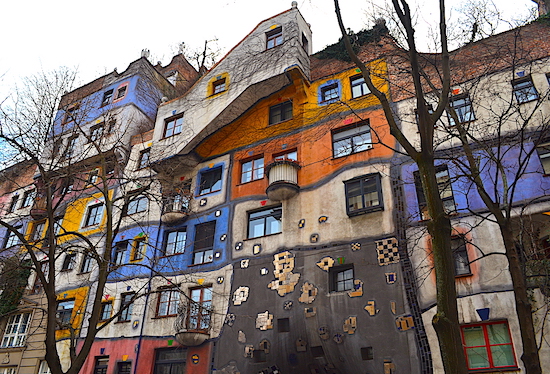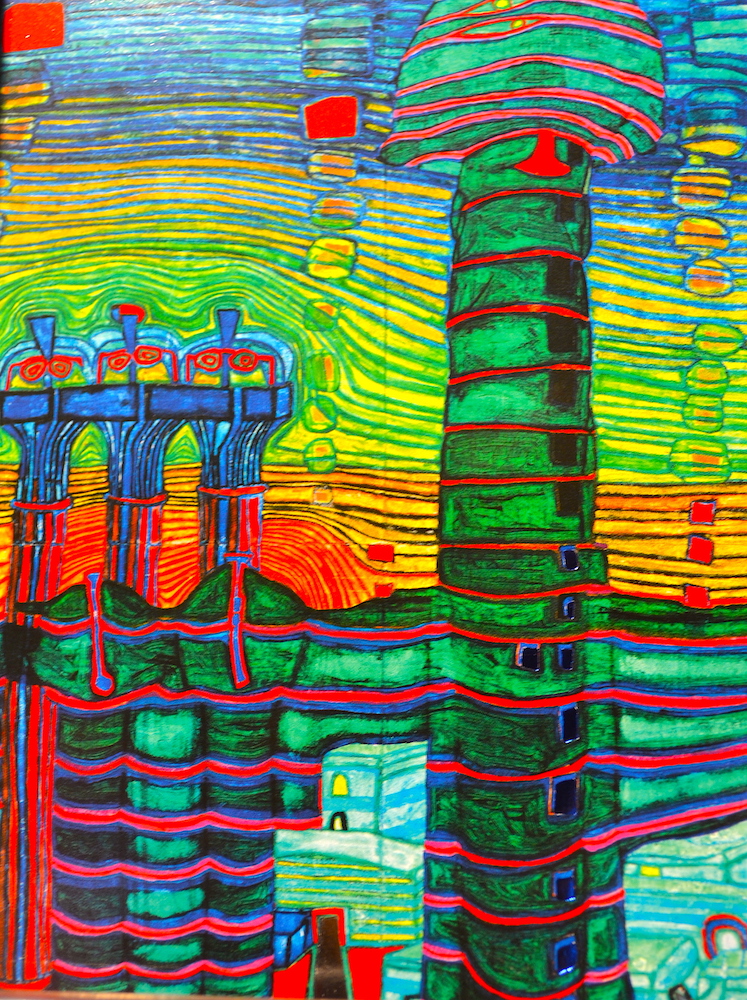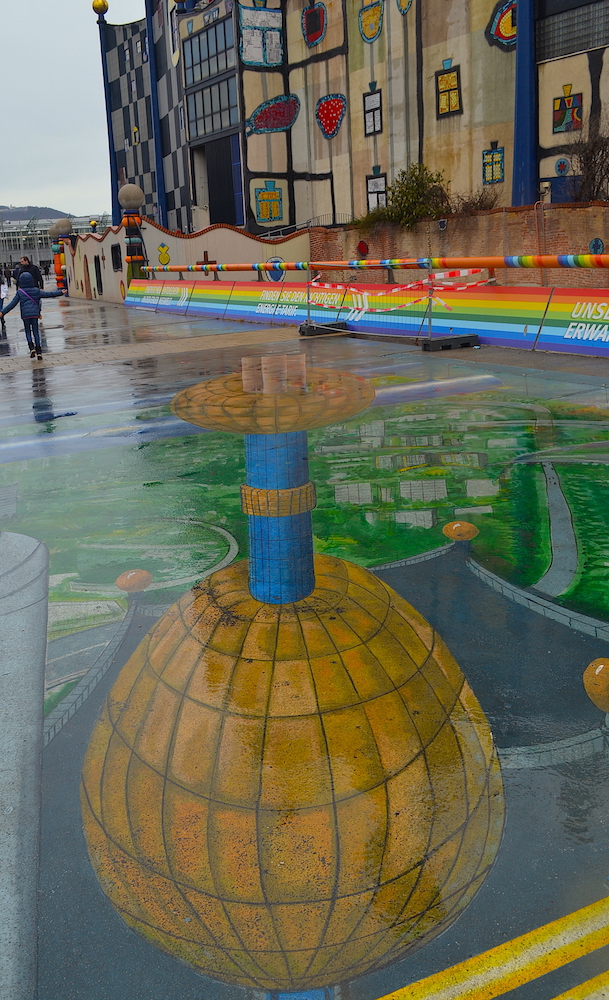Friedrich Stowasser better known by his pseudonym Friedensreich Regentag Dunkelbunt Hundertwasser, was an Austrian artist, who was well known for being a painter. Furthermore, he was active in the fields of architecture and environment protection. His artist name Hundertwasser originates from the Slavic language because “sto” means a hundred.
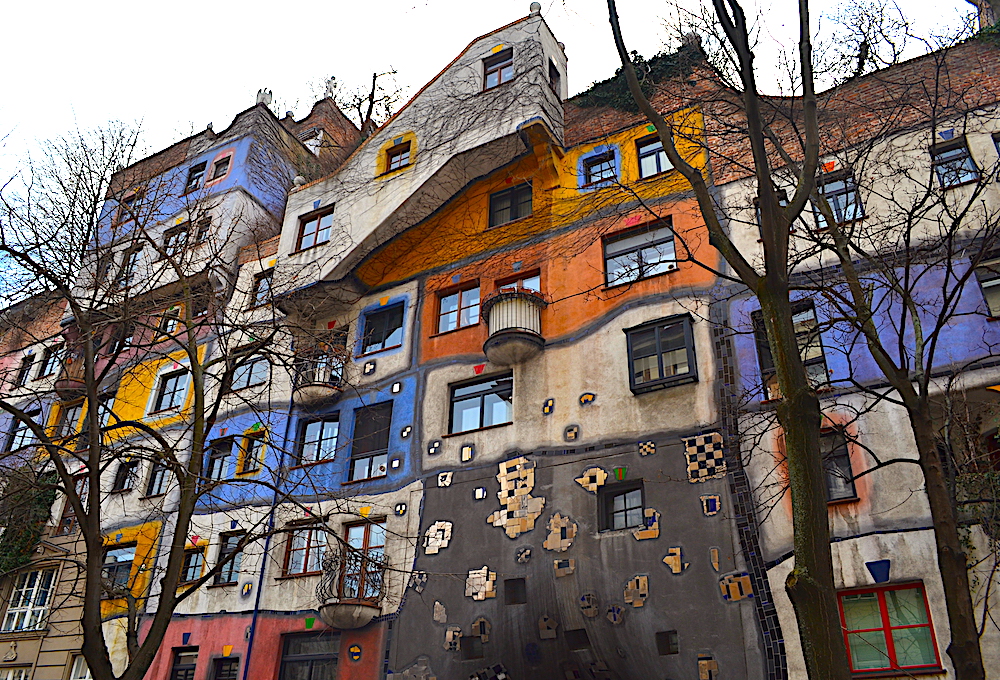
He was an enemy of the straight line and standardization of the free architecture. His work represents his lively imagination, in fact, he uses wavy lines, bright colors, and imagination. The Hundertwasser House is a residential building and a unique apartment house, which you can visit in the Kegelgasse and Löwengasse. There are 52 apartments and four locals, 16 private and three open terraces.
“This house is my soul” – Friedensreich Hundertwasser

You can see two aspects of this house from the outside. The first aspect is on the Kegelgasse where you can take beautiful pictures. If you have taken enough pictures and want to explore another view you can change the side of the Kegelgasse and in front of you is the second building.
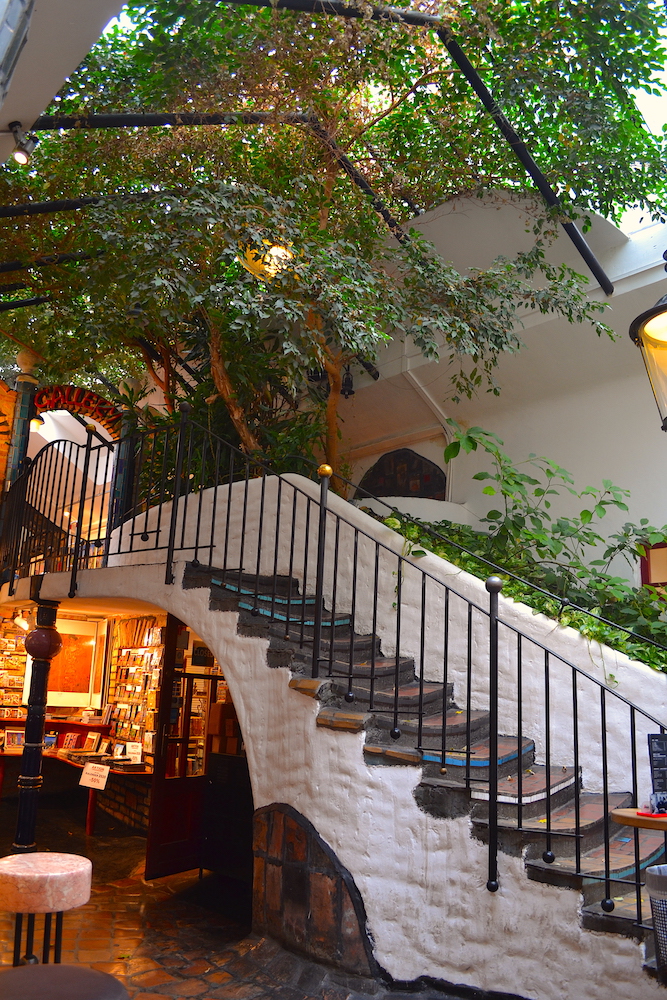
Hundertwasser Vilage Vienna 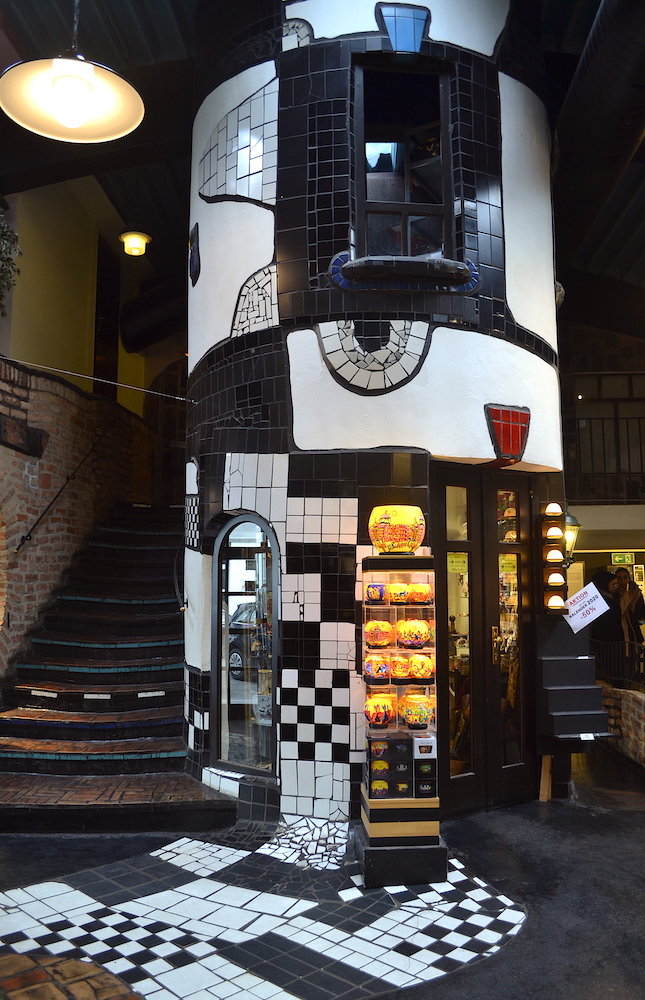
Hundertwasser Village Vienna
The Hundertwasser Village is located in the Kegelgasse directly across the apartment house. The village that was also designed by Hundertwasser is a small shopping center with a few souvenir shops.
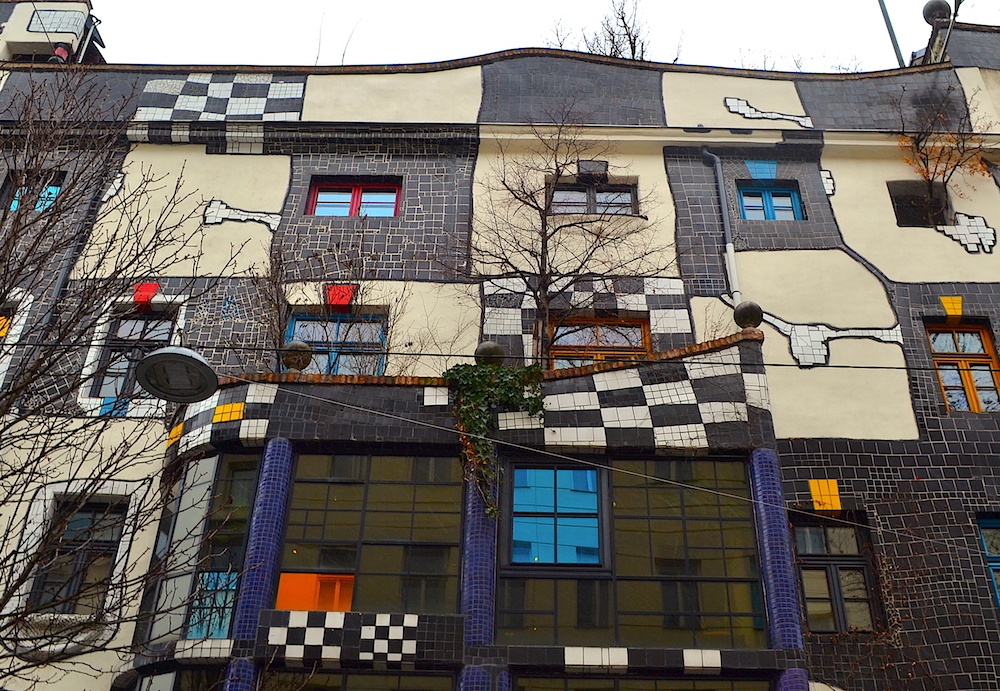
Close to the Hunderwasserhaus is the Museum Hundertwasser also know as “Kunst Haus“. Together with the architect Peter Pelinka he designed a five-storey museum. The apartment on the top floor was used by Hundertwasser for living and working. The architecture of the museum reflects Hunderwasser`s imaginations. It has uneven floors, tree tenants and his famous windows.
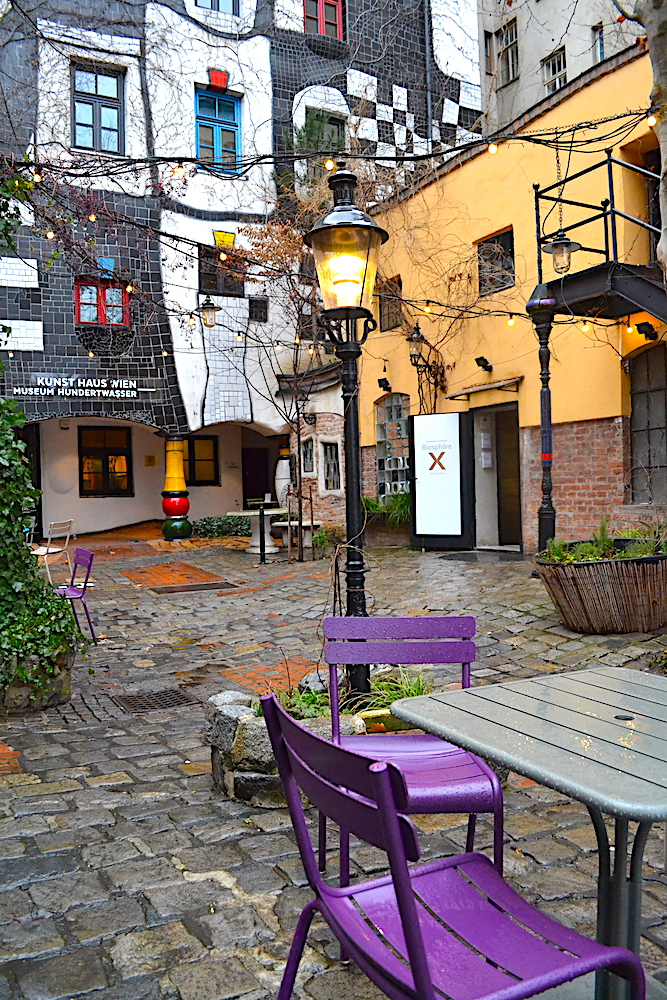
Kunst Haus Vienna 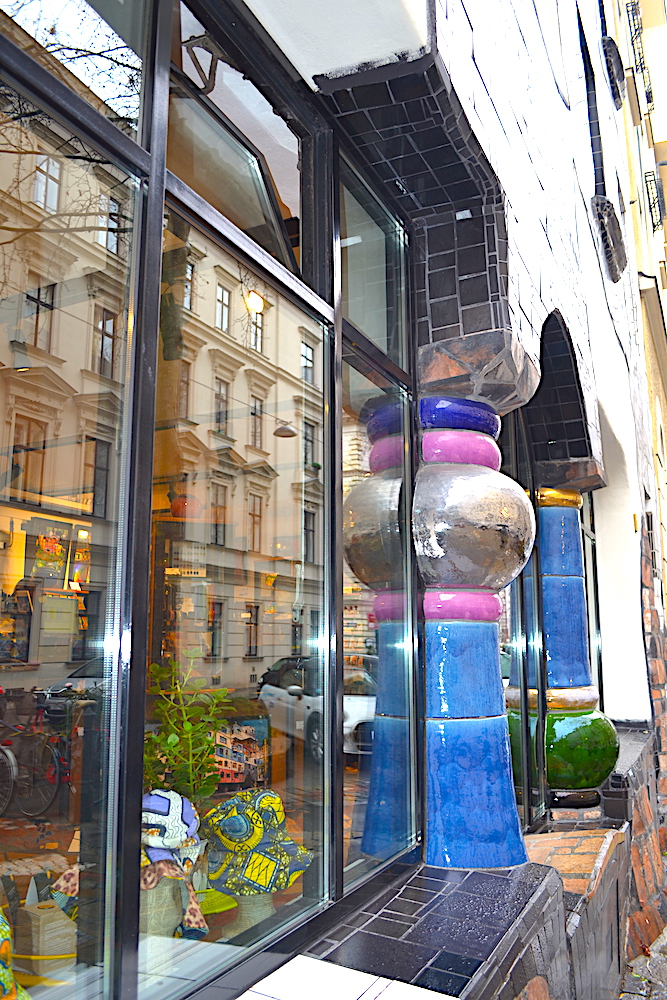
Kunst Haus Vienna
Window Dictatorship and Window Right
“Some people say houses consist of walls. I say houses consist of windows. A person in a rented apartment must be able to lean out of his window and scrape off the masonry within arm’s reach. And he must be allowed to take a long brush and paint everything outside within arm’s reach, so that it will be visible from afar to everyone in the street that someone lives there who is different from the imprisoned, enslaved, standardised man who lives next door.” Hundertwasser, 1990
The Spittelau plant was design form Hundertwasser and built between 1969 and 1971; in 1987 a fire destroyed major sections of the waste incineration plant. Instead of tearing down the plant, it was rebuilt on the same site. Its colorful façade, the golden ball on the chimney, roof greenery and planted trees have made the new Spittelau unmistakable and a Viennese landmark.
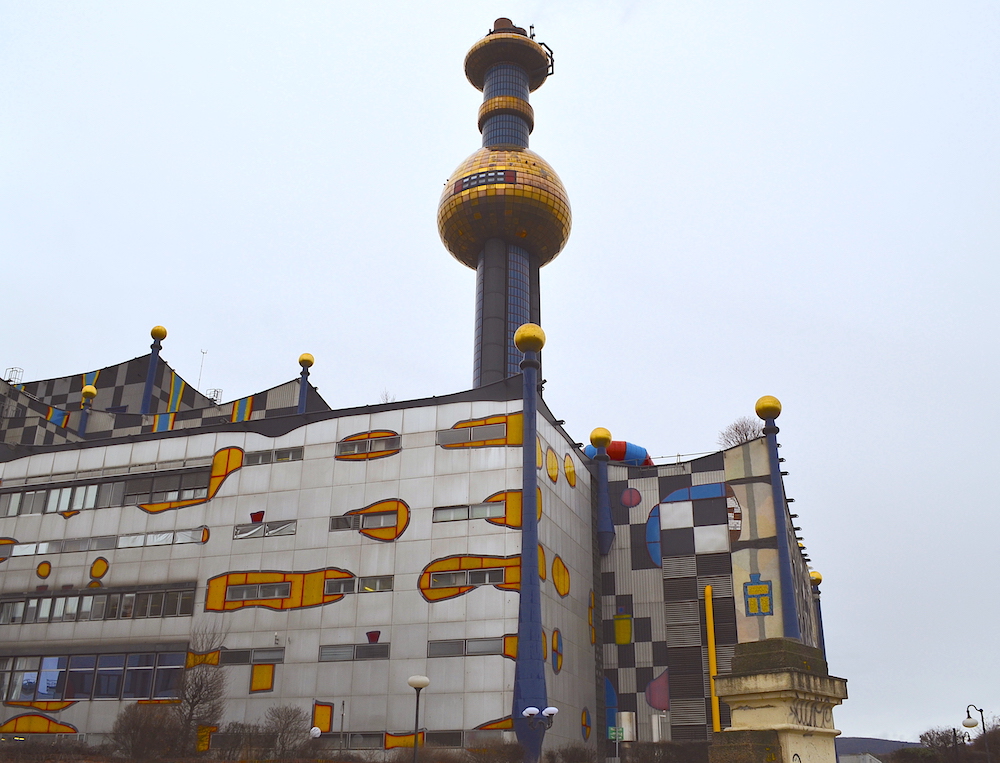
Hundertwasser’s works can be seen all over the world, such as Die Grüne Zitadell von Magdeburg, Germany, then sludge centre in Osaka, Japan; a railway station in Uelzen; a winery in Napa Valley.

